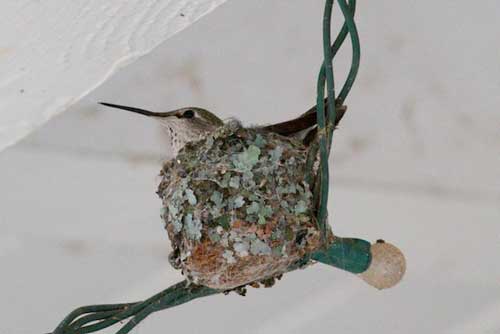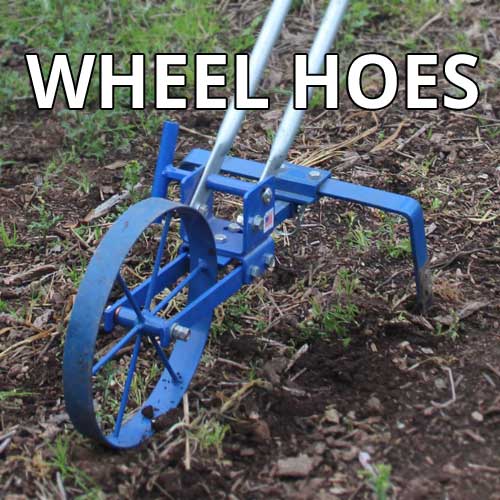Planning a Small Herb Garden
Posted by David Grau on
Originally Posted on February 14, 2014
Greetings Farmers and Gardeners,
Our garden with garlic, onions, and chard finally got a little help from some rain. It has given us a break from having to irrigate the garden, for now. We are still in a deep drought, and we'll need much more rain this year before we can feel secure in our water availability. We'll keep applying mulch to planted areas, to help conserve the water we use.
We've had a steady stream of orders for wheel hoes, wheel hoe attachments, and broadforks, which we know means you are looking forward to getting out into the garden and working.
Planning a Small Herb Garden
 A small section of garden space, nearest the kitchen, is an excellent place for a garden of culinary herbs. This enables the cook to reach out the door and gather up fresh herbs right when they are needed. In one of our gardens, a long-neglected spot by the front door is being transformed into just such a thing.
A small section of garden space, nearest the kitchen, is an excellent place for a garden of culinary herbs. This enables the cook to reach out the door and gather up fresh herbs right when they are needed. In one of our gardens, a long-neglected spot by the front door is being transformed into just such a thing.
The previous owners had been growing periwinkle, edged with prickly holly bushes in the spot. We have already heavily pruned the holly, with the eventual plan to replace them with rosemary. We'll use a broadfork to deeply loosen the soil so we can pull out as many of the periwinkle roots as possible, and amend the soil with some good compost.
We'll plant some English thyme, parsley, and oregano. When it warms up enough we'll plant some basil there as well. It is a spot right by the front door, so herbs will be available heading into the house too. It will be nice to transform the spot from its current state (photo right).
No Mulch vs With Mulch
 We like to experiment in our trial garden. When we planted our garlic and onions in the autumn, we mulched one section of the garden and left the other section un-mulched. Now that our soil has warmed enough for weed seeds to germinate, we can see the striking difference in the two sections. The top photo is the un-mulched section, and the photo below shows our well-mulched garlic plants.
We like to experiment in our trial garden. When we planted our garlic and onions in the autumn, we mulched one section of the garden and left the other section un-mulched. Now that our soil has warmed enough for weed seeds to germinate, we can see the striking difference in the two sections. The top photo is the un-mulched section, and the photo below shows our well-mulched garlic plants.
 Mulch not only helps keep weeds from competing with your crops, it also helps regulate soil moisture. By keeping moisture in the soil longer, less water need be applied, and over the course of a growing season, that can be quite a lot of water. Organic mulch, like the mulch we use, will also slowly decompose and create a richer soil in time.
Mulch not only helps keep weeds from competing with your crops, it also helps regulate soil moisture. By keeping moisture in the soil longer, less water need be applied, and over the course of a growing season, that can be quite a lot of water. Organic mulch, like the mulch we use, will also slowly decompose and create a richer soil in time.
Gardening for Biodiversity
 One of our gardens has more than fruit trees, flowers, vegetables, and herbs. We're also growing a habitat for wild birds, bees, and butterflies. As we've increased the variety of plants, we've noticed a wider variety of wildlife. For the past few years, hummingbirds have built nests along the patio string lights, and this year is no different.
One of our gardens has more than fruit trees, flowers, vegetables, and herbs. We're also growing a habitat for wild birds, bees, and butterflies. As we've increased the variety of plants, we've noticed a wider variety of wildlife. For the past few years, hummingbirds have built nests along the patio string lights, and this year is no different.
Our little hummingbird used an existing nest, sprucing it up with new layers of lichen, spider webs, and feathers. The little hen came along and laid her eggs in the nest and is now sitting quite intently upon her eggs. We figure the hatchlings will have plenty of flowers to visit by the time they fledge.
Hummingbird flowers in our garden include honeysuckle, abutilon, rosemary, and more. Hummingbirds also eat mosquitos, aphids, and other insects, which will be plentiful quite soon.


